| The roots of Bluemoon go back to the year 1986 when class-mates Jaan and Priit started programming for a small hardware company in Tallinn. The 8-bit computers it manufactured were based on Intel's 8080 processors. That was the platform our first action games were created for. | |||
| Jaan met Ahti, who already had an extensive programming background on Z80 based Yamaha MSX computers. | |||
| The threesome got an idea to make an action game for IBM PC platform, which at the time already boasted "superb EGA graphics". The game was called Kosmonaut, and a hairy dude from Estonian State Television computer graphics division offered his help on the GFX side. That's how Kaspar joined the team. |
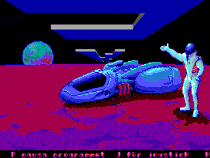
|
||
| Kosmonaut was published in Sweden by Scandinavian PC Systems. | |||
| Jaan and Ahti went to study physics in the University of Tartu. Finding some time left over from studies and contract work, they started to develop a music editor called Sound Club. |
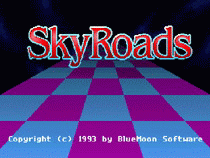
|
||
|
A sequel to Kosmonaut, called SkyRoads, was
produced. The music for the game was written by Kaspar's colleague
Ott.
Since the end of 1992 we have called ourselves Bluemoon Software. |
|||
|
On 17th of June 1993 Bluemoon Software was registered as a privately held
Estonian software company.
In 1993, both SkyRoads and Sound Club were released as shareware titles. In the end of 1993 we started to work on our own free direction texture-mapping engine. |
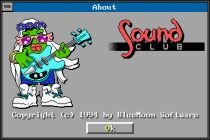
|
||
|
Used the engine to create a couple of commercial advertising demos for the
local computer shows.
Bluemoon Software then went on to sign a development deal with a local hardware importer to develop firmware code for an intelligent RAID hard disk controller. The controller was targeted to the international market and made it to the "Byte" magazine "What's New International" section. In the end of the year we developed a simple 6DOF 3D game for a Texas VR gear company. The game, called Stellar Xpress, was bundled as a demo with their hardware. |

|
||
|
In the beginning of 1995 The Farm (Juhan,
Ott & Kaspar) released Roketz (a nifty little two-player shooter on Amiga),
and were soon contacted by Richard who at
the time was a co-owner of a British publishing house Kompart.
Meanwhile, Bluemoon programmed a secure financial transaction system that included both the server and the client software. Both in MS Windows. More serious stuff. A software driver for Windows scrolling aid – called Tigma SuperScroll. The same year Bluemoon Software teamed up with The Farm in order to port Roketz to PC platform. |

|
||
|
In the beginning of 1996 we started working on the Condor engine. This later
became the basis for The Art of Flying,
Mars, and
Thunder Brigade.
At the same time we kept ourselves busy with developing software for running and maintaining a GSM (European digital cellular phone standard) service center. In the end of 1996 we coded a sequel to Sound Club – Sound Club for Windows 95 and Windows NT. |

|
||
|
First months of the year were spent on assembling the game concept for
The Art of Flying and pitching it to prospective
publishers.
In February 1997 Richard joined Bluemoon as Director of International Business Affairs. In the second quarter of 1997 BlueMoon signed publishing deals for Roketz with Magicom Multimedia and 2'ard Entertainment. |

|
||
|
In May 1997 Bluemoon Interactive (UK) Ltd. was formed in London, UK. Our product label changed from Bluemoon Software to Bluemoon Interactive. In the second half of 1997 Bluemoon co-operated with Hasbro Interactive. We took the Art of Flying concept, and moved it away from the flight-sim genre in attempt to better suit Hasbro's product line. The result was the Mars. At the end of the year Artur joined Bluemoon as a 3D artist. |

|
||
|
In January 1998 Bluemoon signed a development and publishing deal with
Interactive Magic to develop an action title featuring "flying tanks".
In March Bluemoon Interactive Ltd. was registered in Tallinn. On 20th of November the tank game, now called Thunder Brigade, went gold (that denotes the end of development, for you less at at home with game industry slang). |
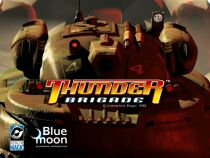
|
||
|
First half of 1999 was spent on developing a sequel for Thunder Brigade (TB2).
Unfortunately, by mid-spring it became apparent that Interactive Magic was
unable to continue financing the development of TB2. A few months later they
barely avoided going bust, and sold their entire game publishing business in
the process.
So, it was about time to take on a new project. After winning a public contest, Bluemoon ended up in the core development team of Everyday.com internet portal. Other (side)projects for 1999 were a hi-tech pilot for Curonia Research, and developing AOF into a budget title, as Richard found a publisher for it. |
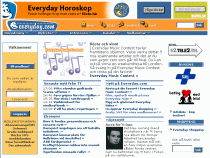
|
||
| The Everyday.com project, and the development of AOF continue. | |||